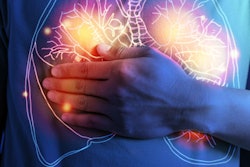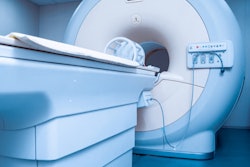
MRI shows that some athletes who have had COVID-19 manifest worse heart circumferential strain compared with their healthy counterparts, a study published August 11 in Radiology: Cardiothoracic Imaging has found.
Circumferential strain is a measure that indicates abnormality, wrote a team led by Dr. Jean Wassenaar, PhD, of Vanderbilt University in Nashville. The study results could have implications for athletes' readiness to return to play post-COVID-19 infection.
"Due to the high prevalence of myocardial inflammation by cardiac MRI shown in an initial series of patients diagnosed with SARS-CoV-2 and evidence of myocarditis as a known cause of sudden cardiac death in competitive athletes, there has been great interest in the development of appropriate screening algorithms for collegiate and professional athletes who have recovered from this infection," the group noted.
Myocarditis can cause serious problems in athletes and must be identified if they are to return to play safely, the team explained. Circumferential strain is a change in myocardium length and indicates pathology (it is represented as a negative value; the lower this negative value, the more severe the strain).
Although Wassenaar's team found only a 4% absolute difference between athletes previously infected with SARS-CoV-2 and those who were not, research has shown that even a -1 absolute difference in strain on cardiac MRI can translate to a 21% increase of major adverse cardiac events after myocarditis.
The group sought to characterize global and segmental circumferential systolic strain in 188 college athletes and active-duty soldiers in order to better understand the effects of mild SARS-CoV-2 infection on this population. The study also included a control group of 72 collegiate and high school athletes and soldiers.
Those with prior COVID-19 underwent cardiac MRI scans between July 2020 and February 2021. The control group underwent cardiac MRI exams between May 2019 and February 2020.
The researchers found that global average of circumferential strain was worse among individuals who had previous SARS-CoV-2 infection compared with healthy controls, indicating COVID-19's negative effects (-24 vs. -25, p-value = 0.009; higher severity is measured by lower scores).
"[Our study found] reduced myocardial strain colocalized to segments shown to be most likely affected by SARS-CoV-2 infection, even in the absence of detectable myocardial inflammation," Wassenaar and colleagues wrote.
More investigation is needed, according to the authors.
"Longitudinal outcome studies are necessary to fully understand the clinical significance of these findings, which will provide better understanding of myocardial changes post-COVID," they concluded.



.fFmgij6Hin.png?auto=compress%2Cformat&fit=crop&h=100&q=70&w=100)





.fFmgij6Hin.png?auto=compress%2Cformat&fit=crop&h=167&q=70&w=250)











